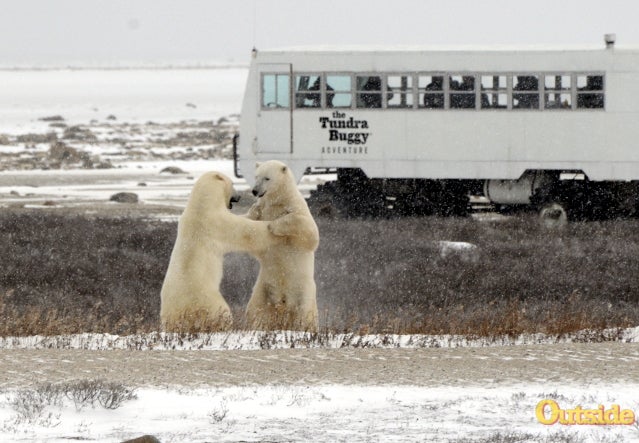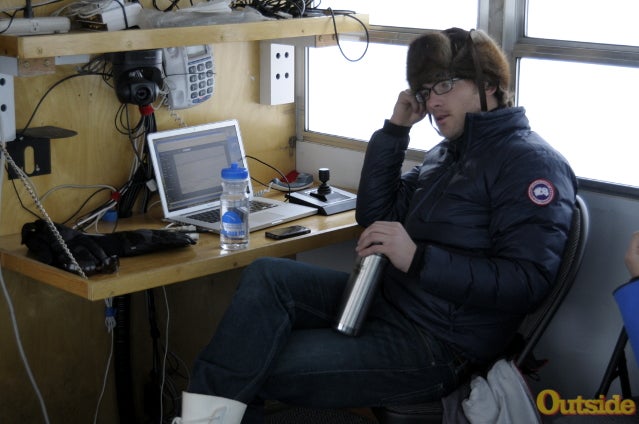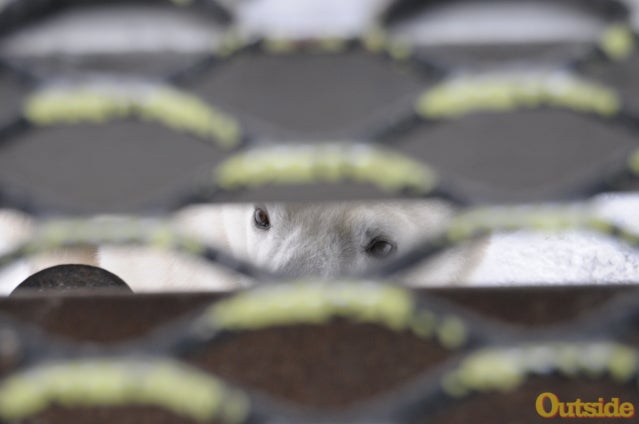
Tundra buggies resemble a kind of double-wide, offroad school bus, with plush suspension, a massive 460 International Diesel engine, and tires that run at 12psi to float over mud and snow. They’re jacked up about 10 feet, partly for clearance, but mostly to prevent any curious polar bears from climbing aboard.
We spent Saturday riding on ‘ Buggy One, a wired-to-the-teeth expedition vehicle that and use to run their roving webcams. It carries two high-definition Sony cameras mounted at the front and rear, which can be aimed and focused from an onboard terminal or remotely controlled from PBI’s Churchill office; another camera on the inside makes it possible to broadcast live video chats with researchers in the field. With two bunks, a bathroom, and a propane stove in the back, Buggy One can stay out on the tundra of the Manitoba Wilderness Management Area anywhere from a day to several weeks at a time.

Our driver for the day was BJ Kirschhoffer, the director of field operations for PBI. BJ fixes Explore’s cameras, and he owes his job partially to the fact that they aren’t impervious to Churchill’s weather, or its fauna. During one stop, he showed me an iPhone video he had shot of a bear tearing out one of his tail lights and sticking its nose through the resulting hole. “Maintaining that stuff with large carnivores on the ground is a challenge,” he said. “You have to be careful.”

Bears would approach us when we stopped and lean their bulk against the side of the buggy, standing on their hind legs to peer inside. (The drivers call this “buggy love”). One young bear crawled under the deck and sniffed at us through the metal grate in the floor, getting close enough at one point for me to stick a handheld microphone by its snout and record its muffled snorts. We saw a few pairs of male bears sparring, a kind of play or training fighting that gets them ready for the real, often bloody, battles that take place during mating season.
Churchill is far north enough that during the late fall and winter, the entire day seems like one long twilight. A pinkish-red sheen hangs around the horizon from morning until night. By the time we got to Frontiers North’s lodge, a line of five buggy-like cars sitting in the middle of the tundra like a stranded train, it was actually getting dark.
The guest portion of the lodge consisted of a kitchen car, a lounge, and two wood-walled sleeping cars with rows of bunks done up in matching Hudson’s Bay point blankets. Explore keeps two additional webcams there, and it’s not hard to see why: during the night we spent there, bears roamed constantly around the lodge, pacing around the kitchen and sticking their faces into the gaps between the cars. We wouldn’t set foot on the ground again until the next afternoon.
—Adam Roy
